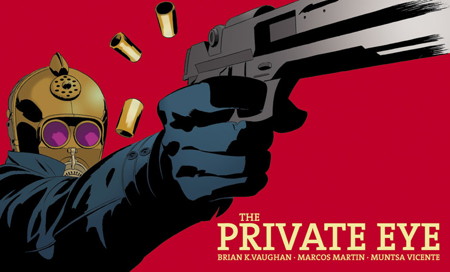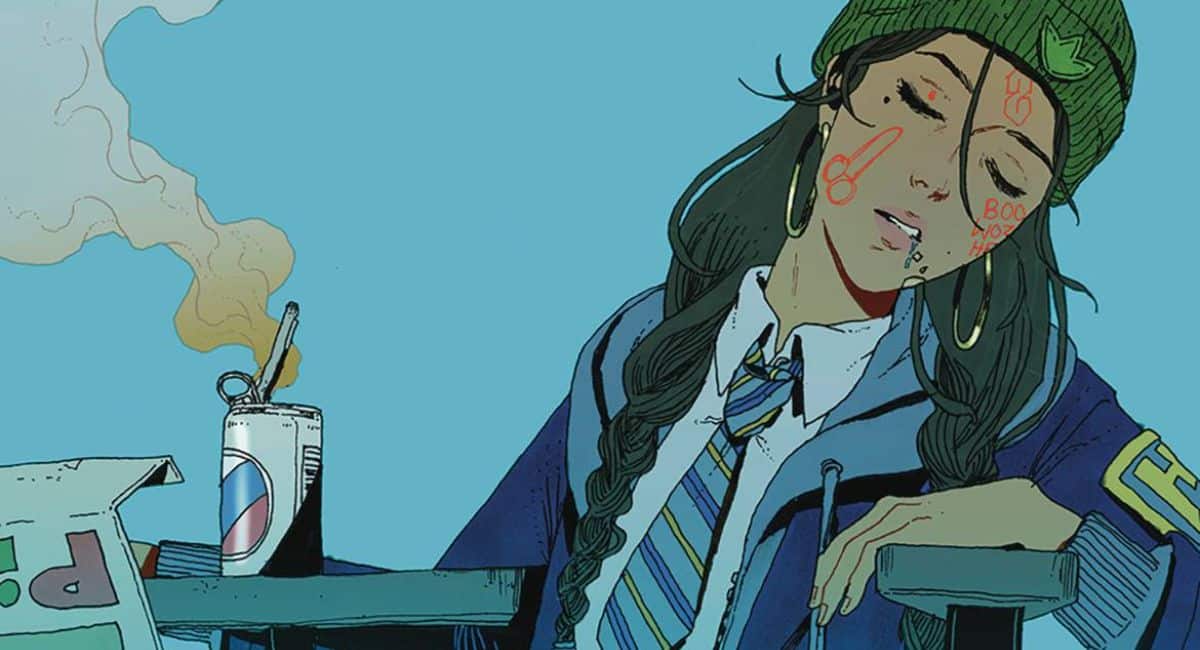The other day I was prepping for a talk on marketing at an NYU publishing class, and reached out to the Twitosphere to ask what were “the notable comics marketing success stories over the last year” and the Twitosphere responded with a bunch of smart and savvy suggestions:
@Comixace Zenith Collection.
— Chris Weston (@westonfront) November 19, 2013
@Comixace The Last of Us was good video game cross marketing. Attack on Titan was part luck, part good social marketing w/Kodansha
— André ^_^ (@andrepaploo) November 19, 2013
@Comixace I think @ImproperBooks have done a genius job in this respect over the past year!
— Sally Jane Thompson (@SallyThompson) November 19, 2013
@Comixace a: the amount of urasawa winning western prizes, b graphic novels winning mainstream prizes, March, @molcher business, image expo
— alison sampson (@itsthatlady) November 19, 2013
@Comixace East of West. DC’s digital comics, notably Injustice. The Walking Dead’s continued spread into other markets.
— B. Clay Moore (@bclaymoore) November 19, 2013
@Comixace March – hands down the biggest winner in terms of high profile, quality placements.
— Jonah Weiland (@jonahweiland) November 19, 2013
@Comixace The Private Eye and @PanelSyndicate even without numbers.
— UjO (@hUjOw) November 19, 2013
@Comixace batman 66 for sure.
— Darrin O’Toole (@darrinotoole) November 19, 2013
@Comixace The press rollout for the stunning OGN @fifthbeatle by @VivekJTiwary.
— David Hyde (@superfanpr) November 19, 2013
@Comixace @ValiantComics It seemed like they were everywhere.
— Ben Mayfield (@UndeadAvenger) November 19, 2013
@Comixace monkeybrain and thrillbent stuff is showing every indie creator how to do it. Proving a lot of naysayers wrong.
— Christopher Kosek (@ckosek) November 19, 2013
@Comixace @XLarimeX Taylor’s A Voice In The Dark from Top Cow! Blowing the doors off while speaking quietly.
— Concrete Park (@ConcretePark) November 19, 2013
@Comixace how @kellysue‘s been nurturing the Captain Marvel community…
— Marc Bernardin (@marcbernardin) November 19, 2013
@Comixace image expo, the idea and execution of the event
— john siuntres (@johnwordballoon) November 19, 2013
@Comixace The new Sandman comic? The All-New X-Men comic. East of West by Image as a breakaway hit.
— Shoshana Kessock (@ShoshanaKessock) November 19, 2013
@Comixace @kellysue Unity had a pretty good campaign with their car.
— Spencer Scott (@spencer_cscott) November 19, 2013
@Comixace @kellysue Saga’s mainstream coverage. And in an inadvertent, Streisand-effect kind of way: Apple banning Sex & Sex Criminals
— Dr. NerdLove (@DrNerdLove) November 19, 2013
@Comixace The Phoenix, Valiant, Titan have all been especially on form this year, I think. Image Expo was a big deal
— Steve Morris (@stevewmorris) November 19, 2013
@Comixace I really like the mini-comic subscription model that Oily Comics, Retrofit and others have used. It’s nice getting mail.
— Ryan Catcher (@RyanCatcher) November 19, 2013
@Comixace @PanelSyndicate Comixology Submit . Sandman ads. Marvel 700 crashing Comixology
— Keith Callbeck (@CubReporterK) November 19, 2013
@Comixace @PanelSyndicate Pretty Deadly, Panel Syndicate, the friggin’ Marvel one-word teasers (sadly)…
— Matt (@gamoid) November 19, 2013
@Comixace In to particular order, @PanelSyndicate, @Thrillbent, and @Comixology.
— Aaron Bourque (@TheMadWhitaker) November 20, 2013
@Comixace Pretty Deadly. One amazing teaser image with team names present sold that book. Excellent pre-order print form as well.
— timdaniel (@enormouscomic) November 19, 2013
@Comixace from the entirely self-serving camp… #WeAreBoom . Our year to year direct market sales reflect the success.
— Filip Sablik (@FilipSablik) November 20, 2013
A couple of things that got multiple mentions seem worth discussing. First, the success of Panel Syndicate and “The Private Eye” is the one thing no one can plan on—when a few superior creators, in this case Brian K Vaughan, Marcos Martin and Muntsa Vicente, launch a new webcomic, people are going to pay attention even if it is only a single, unexpected press blast. Bravo on that.
Image has really done a killer job this year, and the Image Expo obviously reinforced that. The idea of making a bunch of big announcements a few weeks BEFORE San Diego captured pent up enthusiasm and didn’t get drowned out. Their books just keep hitting and hitting.
Valiant, obviously, have really been promoting and marketing themselves smartly, with the Unity rollout a particular standout in a market full of crossover burnout. As suggested, Titan and BOOM! also found ways to stand out in a crowded market.
Thrillbent and Monkeybrain have been able to keep the spotlight on their digital platform when a lot of similar efforts have faded. In almost every case, it’s the high level of creative talent involved that fuels the interest. Both have also used creators with existing social media followings to make sure that releases get attention—when you hire someone with a lively Twitter feed, you’ve hired an ancillary marketing department all in itself.
Marvel’s One Word teaser campaign was also a big success, even though it wasn’t always easy to find out just what the word was actually referring to. It brought back some of the excitement and speculation that the New 52 rollout perfected. (The New 52 is really the gold standard of comic book marketing in recent years, although surely a $1 million budget didn’t hurt.)
As for DC, although no one mentioned it, Villains Month has to be considered a huge marketing success. As confusing and problematic as the execution was, it had people talking constantly, and a huge payoff.
Another DC marketing scheme that got mentioned was the TV ad campaign for Sandman Overture. I must confess, I was startled while watching American Horror Story: The Coven to suddenly see a very brief ad for Sandman bust out.
AHS is a great pick to advertise Sandman—this year’s storyline is a mostly female-focused tale of warring witches in New Orleans—but the ad had a major fail for me: no call to action. At the end it announces that the book is available in print and digitally but no place to go: no URL or social media hashtag, both staples of modern advertising. No idea what’s going on there, but it seemed odd.
In case you’re wondering, the book I chose to spotlight in my little talk was MARCH, because in graphic novel terms, it’s had the biggest and most successful rollout of just about ay single book I can think of, with multiple very high level TV appearances. Granted, it had a serous subject and the involvement of a real American hero in Rep. John Lewis, so it was kind of a pre-sell. (If, say, Lisa Hanawalt showed up on the Rachel Maddow show to discuss My Dumb Dirty Eyes, that would truly be the greatest marketing job in comics history.) Still, I’ve seen well meaning projects fail before. On paper, MARCH looked like it couldn’t miss, the the plan to maximize its exposure was executed flawlessly.








I agree on March. It’s been great to see Rep. Lewis all over the place promoting it. Very psyched for the 2nd and 3rd volumes and them doing it all over again.
DC also pushed The Death of the Family.
There was a phone booth ad next to my office, featuring the “masked” Joker. Nothing yet on the subway, so the gold standard continues to be Julio & Marisol.
Mainstream marketing?
March.
The Walking Dead.
Agents of SHIELD.
Doctor Who 50th.
The Fifth Beatle… a bit early to tell, as it was just released. But it is not often that a title gets a Barnes & Noble event, and then a comics shop event two days later in NYC.
My Little Pony… was that this year, or last? One Million copies. Impressive.
First Second, in general, does an amazing job. I was a bit embarrassed to see Paul Pope at NYCC… I had already seen him at BookExpo and ALA this year! I kinda felt like a fanboy! The book was an instant bestseller (and will probably do well in libraries). Boxers & Saints is even more ambitious than American Born Chinese, and quickly garnered a National Book Award nomination.
Hachette. Not in the U.S., but overseas. Masterful launch of a new creative team for the new Asterix title in Europe. (And a menhir across the noggin to Sterling and Orion for still not getting copies to the U.S., a month later.)
Afterlife With Archie.
Great promo video… so great, I want to see a motion comic!
Great creative team, great story.
The Archie team is slowly, quietly, doing small events which get noticed. Next up: The Battle of the Bands around the world.
Brickbats?
PBS for flubbing the publicity for “Superheroes: A Never-Ending Battle”. They could have launched it the Wednesday before NYCC, nationwide with comics shops hosting viewing events, perhaps even a giant cosplay mini-con in Lincoln Center (like the Met does for its opera premieres). Instead, they push it back a week, run all the episodes at once, and… nothing. No buzz. One panel at NYCC. No other promotion (banners? window clings? a booth?).
BTW, that’s a good class at NYU. I took it a few years ago. Who is the instructor?
March and Image Expo are top of my list.
I think you raise a great point, Heidi, about how difficult it is to measure the success of the marketing by itself against the existing success of the book/property/creative team.
Every marketing manager has a cookie cutter campaign template that gets tweaked for different titles, and I’ve always found that my boilerplate effort for an unknown title will usually fall flat, while the same effort (or less) for a major media property just goes bananas — you barely have to send out a press release or teaser and people jump all over it.
And when things get more creative it’s even harder to judge. When Janna Morishima was at Papercutz she orchestrated a brilliant publicity campaign for the Dance Class series involving dance studios around the country. That by itself brought the series up from cancellation status to dependable mid list performer with growing sales every volume. That’s a success by any measure, but no one will ever know about it because the cartoonists weren’t interviewed on Colbert.
Generally speaking, you need a well-oiled marketing machine to make a success out of any book, but the big snazzy noticeable campaigns don’t actually get noticed unless there’s something innately notable about the book to begin with.
Comments are closed.